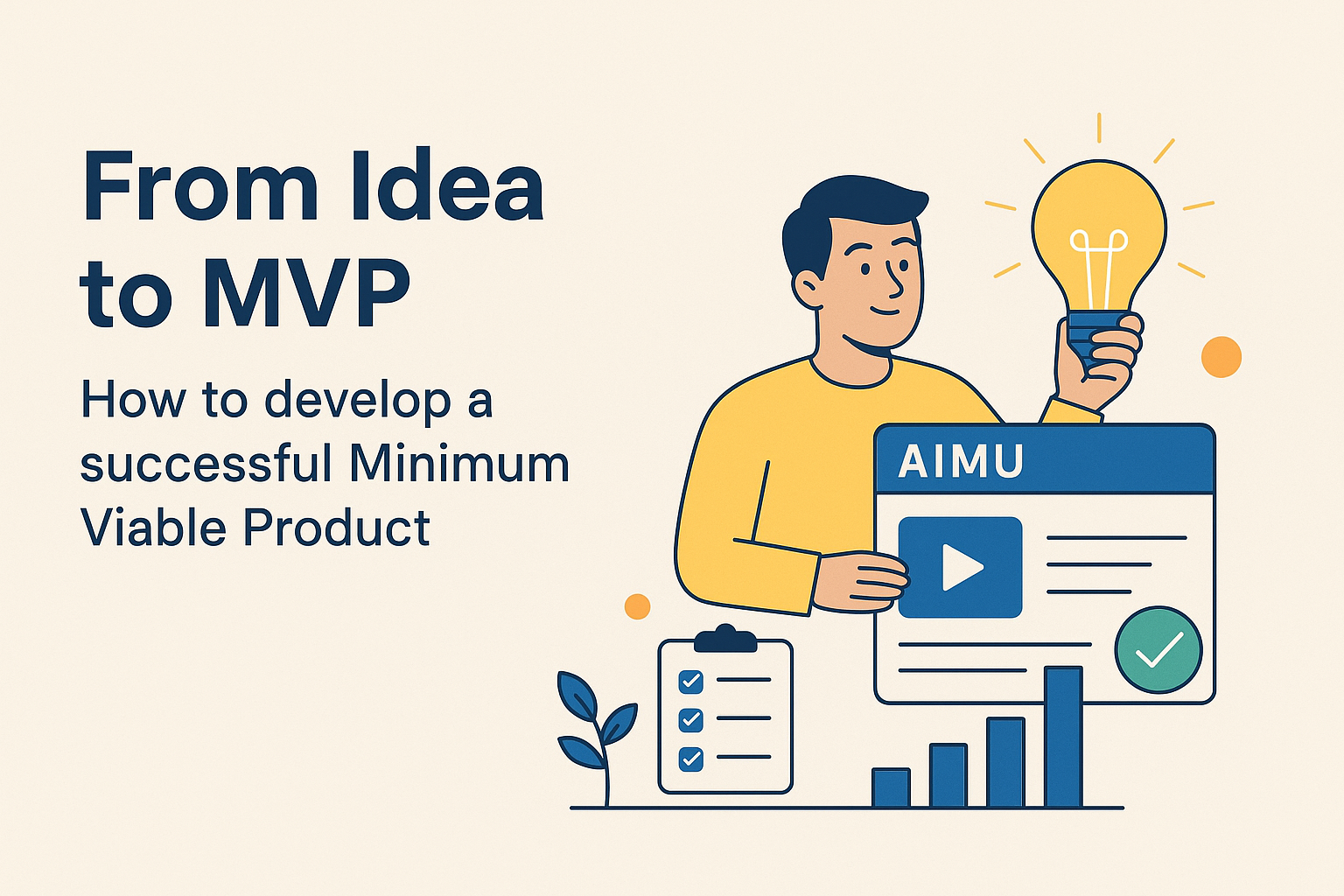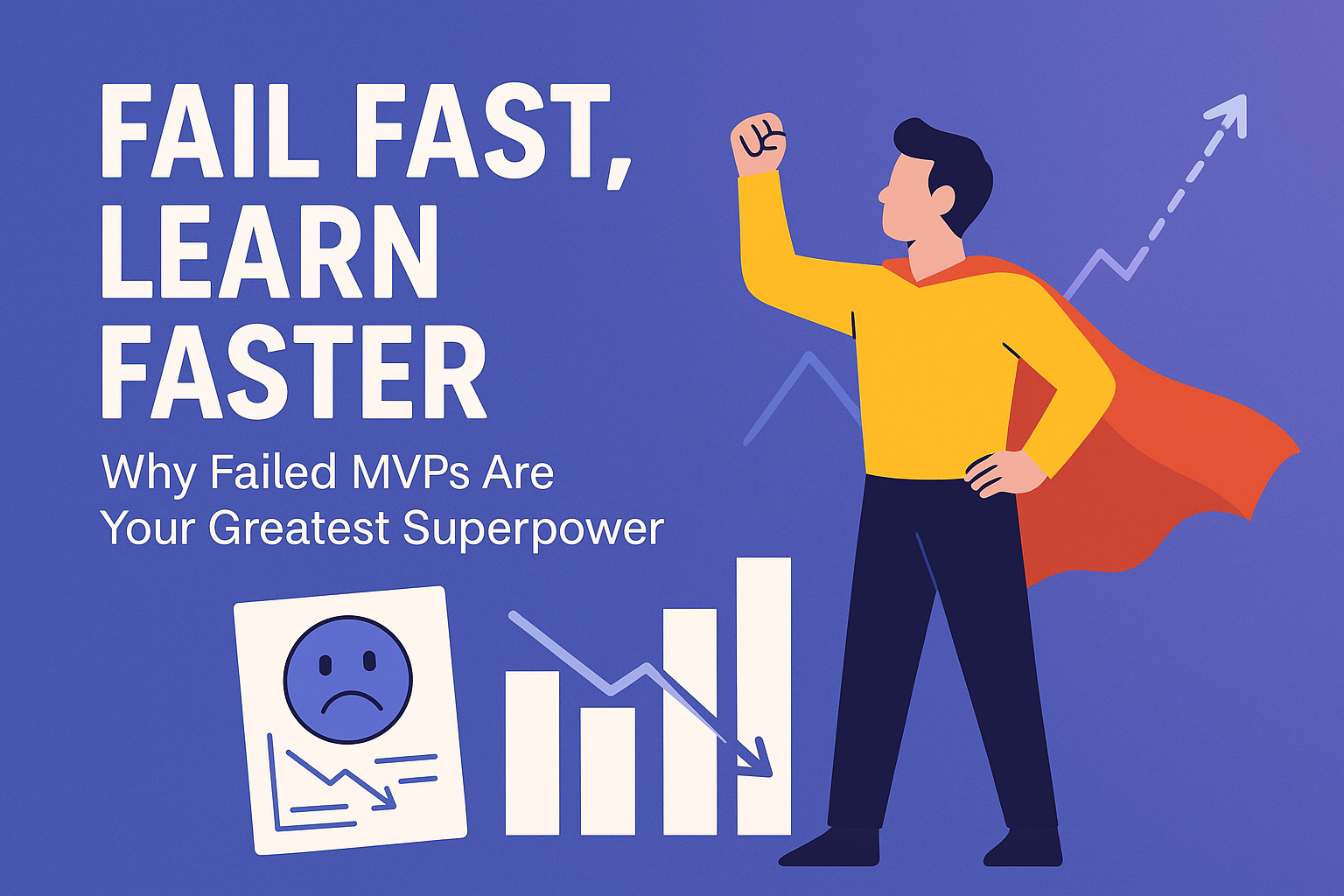
Fail Fast, Learn Faster
In the world of entrepreneurship and innovation, failure is often treated like a dirty word. It’s something to be avoided, hidden, even feared. But what if we told you that failure — especially in the early stages of building a product — is not just inevitable, but actually essential to your long-term success? Welcome to the mindset of "Fail Fast, Learn Faster," where every misstep becomes a springboard toward something greater.
When you build a Minimum Viable Product (MVP), you are not aiming for perfection. You are building to learn. An MVP isn’t the final product you dream of — it’s an experiment. It’s a smart, lean tool designed to test your assumptions about what customers need, want, and are willing to pay for. The true purpose of an MVP is not to impress the world but to gather insights. And sometimes, those insights are uncomfortable. They show you that your idea didn’t hit the mark. They reveal weaknesses in your concept. They force you to rethink and rework. And that’s exactly what makes them so powerful.
Failing fast doesn’t mean rushing to failure without care. It means learning quickly what doesn’t work so that you can focus your time, energy, and resources on what does. Every MVP that doesn’t succeed is packed with lessons that can refine your thinking, sharpen your strategy, and ultimately help you build something truly valuable. The faster you uncover these lessons, the faster you evolve.
One of the most dangerous myths in business is the idea that successful entrepreneurs got it right on the first try. In reality, many of the biggest names in tech and innovation have a history littered with failures. Twitter started as a podcast platform called Odeo — a project that flopped when Apple launched iTunes podcasts. Netflix famously started as a DVD rental company before pivoting into streaming and then original content creation. The common thread? Each "failure" was a critical part of the journey toward something greater.
When your MVP fails, it forces you to confront the most important questions: Are you solving a real problem? Are you targeting the right audience? Is your solution practical and appealing? These are questions that even the best market research can’t fully answer until your product is in the hands of real users. And the feedback you receive — especially the critical feedback — is pure gold.
But there’s a catch: you have to be willing to listen. It’s easy to dismiss failure by blaming the timing, the market, the marketing, or anything else outside your control. The real power comes when you own the failure, analyze it honestly, and ask yourself what you can learn from it. Did users struggle to understand your product? Was the value proposition unclear? Did the market simply not care enough about the problem you were solving? Each answer brings you closer to the truth and helps you build a stronger, better next version.
Adopting a "Fail Fast, Learn Faster" mentality requires resilience. It’s emotionally tough to see a project you poured your heart into stumble. It’s hard to tell your team, your investors, or even yourself that things didn’t go as planned. But resilience is a muscle. The more you practice recovering from setbacks, the stronger you become. Over time, you start to see failure not as an ending, but as a beginning — the start of a new, smarter, more focused effort.
Building resilience also means celebrating small wins along the way. Even if your MVP didn’t perform the way you hoped, you probably achieved something meaningful. Maybe you proved that one feature had potential. Maybe you discovered a market segment you hadn't considered. Maybe you learned that a completely different approach is needed. These are victories, even if they don’t look like traditional success stories.
Moreover, failing fast fosters creativity. When you realize that it’s okay to be wrong, you free yourself to experiment more boldly. You’re no longer trapped by the fear of making mistakes. Instead, you’re energized by the opportunity to explore, innovate, and discover new possibilities. Some of the most brilliant innovations come from unexpected pivots — moments when entrepreneurs saw their "failure" not as a dead-end, but as a detour leading somewhere even better.
Failing fast also builds a culture of trust and honesty within teams. When teams know that they won’t be punished for mistakes, they are more likely to take smart risks, share bold ideas, and challenge the status quo. Innovation thrives in environments where people feel safe to fail — and even safer to learn from it.
Finally, embracing failure sharpens your strategic focus. Each failed MVP teaches you to prioritize ruthlessly. It forces you to ask: what is truly essential? What features or ideas deserve your attention, and what can be cut away? This laser focus is what separates great products from mediocre ones. It’s not about doing more; it’s about doing what matters most — and doing it exceptionally well.
In the end, failure is not the opposite of success. It is the pathway to success. It’s the fire that forges better ideas, stronger teams, and smarter strategies. Every time your MVP stumbles, you are given a priceless opportunity: to learn, to adapt, and to come back stronger than before.
So the next time you launch an MVP and things don't go as planned, don't panic. Celebrate. You are doing exactly what great entrepreneurs do. You are learning faster than your competition. You are growing stronger with every mistake. You are transforming setbacks into stepping stones.
Failure isn't your enemy. It's your superpower.
Own it. Learn from it. And let it propel you to your next big success.

